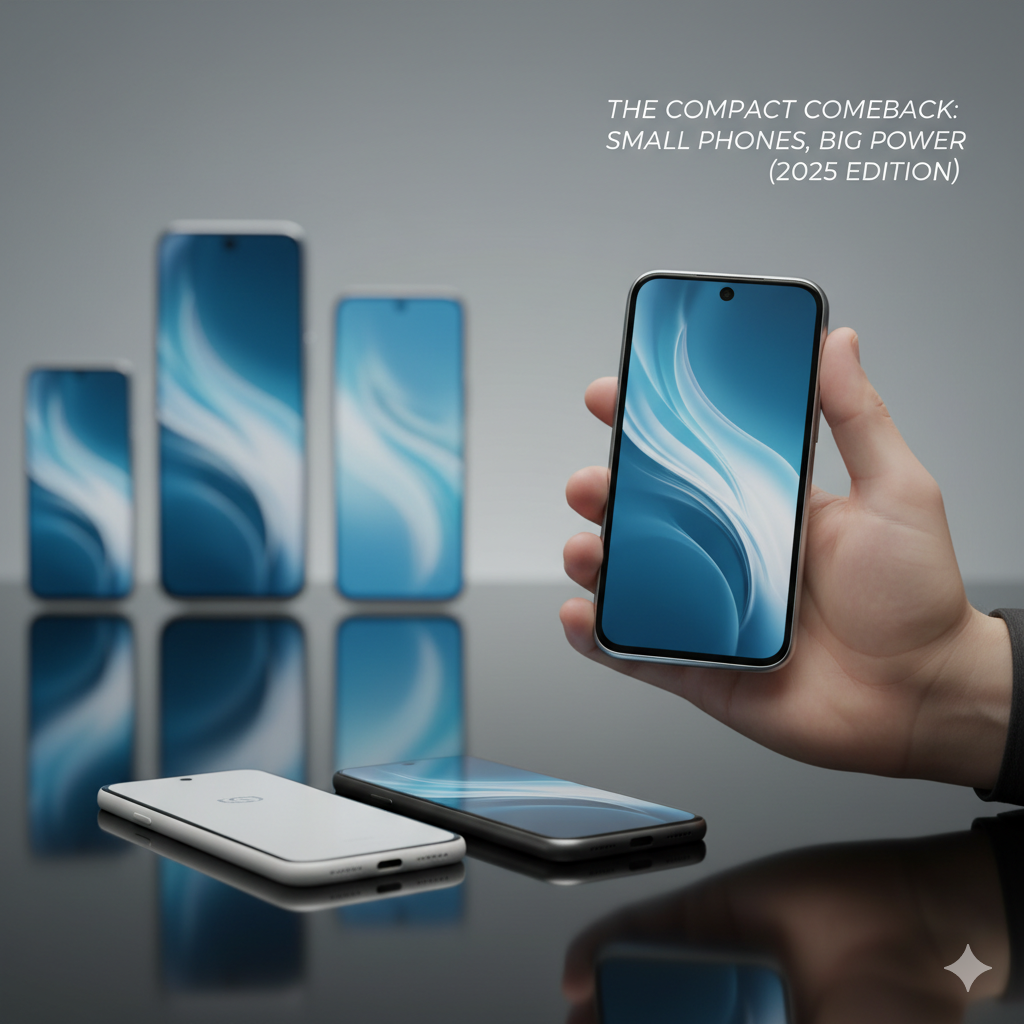In a sea of ever-larger screens and oversize phones, finding a “compact” model in 2025 feels like discovering a hidden gem. These phones don’t compromise on power, camera, or display — they just make sure it all fits neatly in one hand.
This guide compares the leading compact smartphones of 2025. We’ll cover what makes a phone truly compact, key specs to look for, and six excellent picks (both Android & iOS) that balance size with performance beautifully.
░ MORE FROM GUIDES

What Makes a Phone Truly Compact?
To review what “compact” means in 2025, here are key criteria I used:
- Screen size & dimensions: ~6.3-inch or less, or phones with narrow width/short height so they fit well in hand. Devices ~6.1-6.3″ are often the sweet spot.
- Weight: Lighter devices feel far more one-handed, especially if under ~170-180g.
- Bezel size / aspect ratio: Slim bezels, tall aspect ratios help reduce footprint.
- Usability features: Single-hand UI modes, good haptic feedback, easy reach of buttons (power, volume) and gestures.
- No big compromises: Battery life, performance, camera, and durability should still be strong despite smaller body.
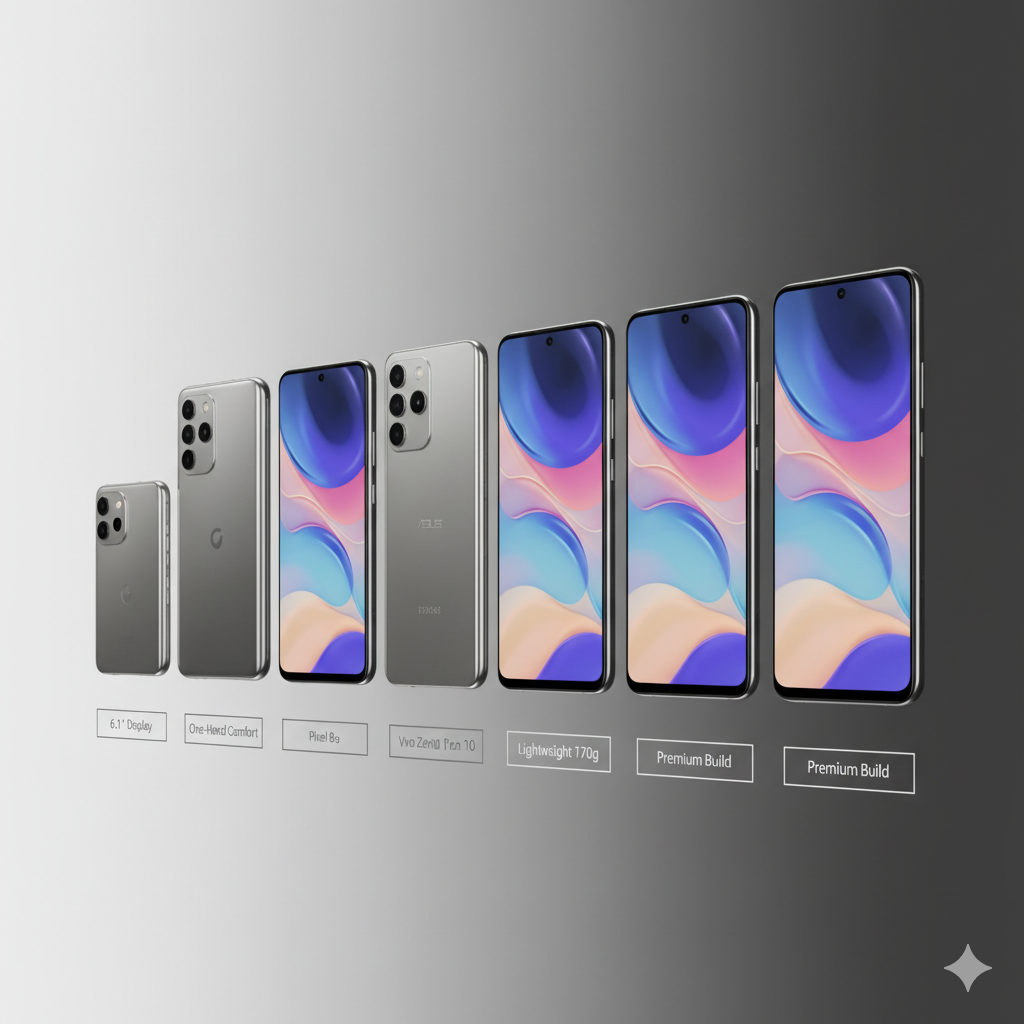
Top Picks for Compact Phones in 2025
Here are six phones that satisfy those criteria, representing the best options for one-handed use this year.
| # | Phone | Screen / Size Highlights | What You Get in a Compact Body |
|---|---|---|---|
| 1. Samsung Galaxy S25 | 6.2-inch display; very high screen-to-body ratio | Flagship chipset (Snapdragon 8 Elite or equivalent), top tier cameras, IP68, polished One UI. Feels premium, lightweight. | Smaller battery compared to larger counterparts; possibly price premium for compact form. |
| 2. Google Pixel 9 | ~6.3-inch OLED; widths and design optimized for comfort. | Excellent camera performance via Google’s computational photography; great software polish and long OS updates. | Not as compact as older “mini” phones; large battery may add a bit to thickness. |
| 3. Google Pixel 8a | 6.1-inch OLED display, slim bezels; among the more compact mid-range picks. | Solid balance: good camera, clean UI, modern specs without flagship price. | Charging speeds not always fastest; mid-range chipset means some performance compromises. |
| 4. Asus Zenfone 10 | ~5.9-inch AMOLED; one of the very few sub-6-inch flagship-level Android phones. | Snapdragon 8 Gen 2, strong camera hardware, excellent performance, light feel. Ideal for those who want very compact footprint. | Smaller battery due to size; possibly fewer cameras or less zoom than larger phones. |
| 5. Vivo X200 Pro Mini | ~6.31-inch 2K AMOLED; narrower/well-proportioned chassis. | Strong specs: Zeiss partnered cameras, high refresh display, good RAM/storage; premium feel. | Price tends to be high; availability region-specific. Slightly above ideal width for “very small” hands. |
| 6. iPhone 15 Mini / SE-4 (rumored) | Apple’s small form factor around 6.1-inch or less; leveraging compact design history. | iOS performance, ecosystem advantages, strong build quality, camera consistency. Likely great for those who prefer iPhone. | Rumors suggest some trade-offs in charging speed, possibly in camera versatility; premium pricing for smaller size. |
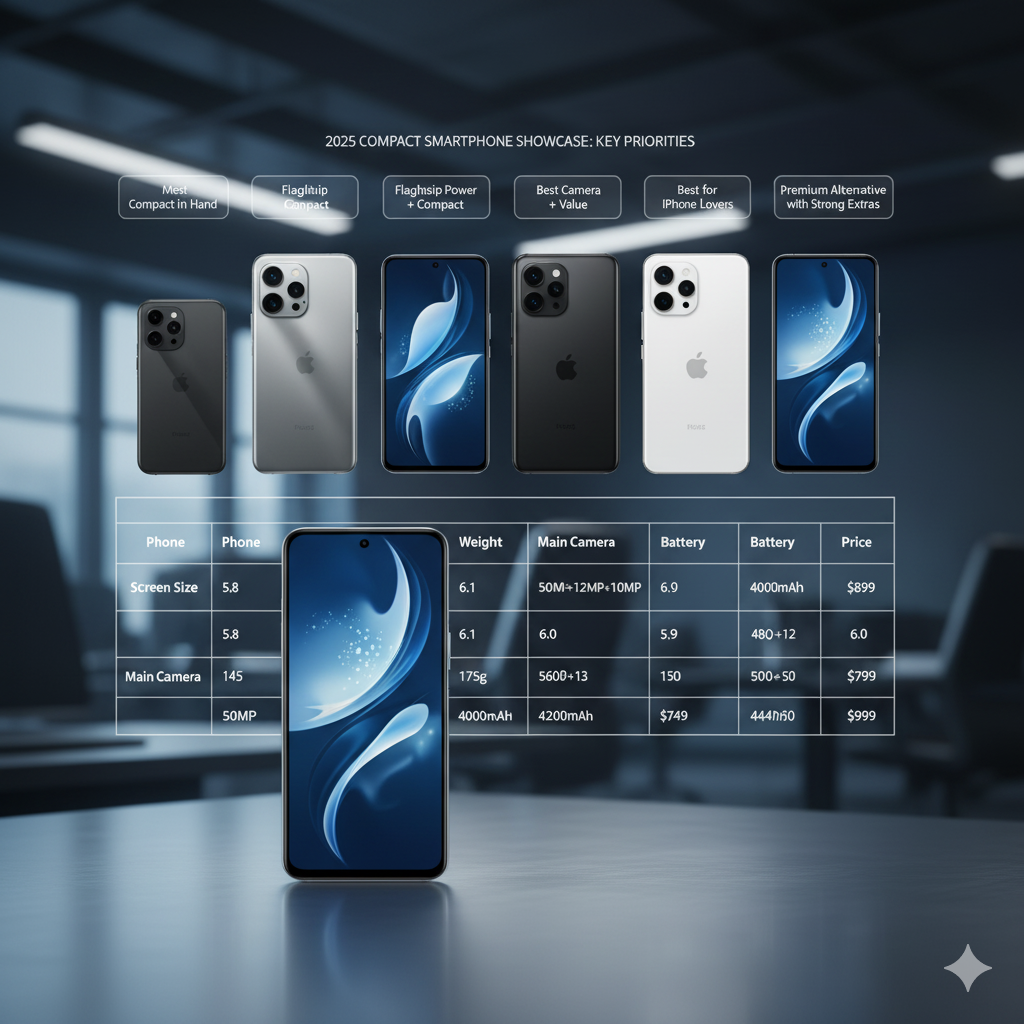
Comparing the Best: What to Prioritize
Here’s a detailed spec-comparison to help you decide depending on what matters most:
| Priority | Best Choice | Why It Stands Out |
|---|---|---|
| Most compact in hand | Asus Zenfone 10 | It’s truly sub-6-inch at flagship specs. Little else feels as small. |
| Flagship power + compact size | Samsung Galaxy S25 | Balanced hardware, great camera, durability + premium finish. |
| Best camera software + value | Google Pixel 9 / 8a | Google’s image processing remains class-leading. |
| Best for iPhone lovers | iPhone 15 Mini / SE-4 (if confirmed) | Familiar feel, smaller size, strong support and optimized hardware. |
| Premium alternative with strong extras | Vivo X200 Pro Mini | Extras like Zeiss tuning, superior display, possibly more RAM/storage. |
What You’ll Usually Sacrifice with Compact Phones
Even the best compact phones have trade-offs. Knowing them helps make a smart choice:
- Battery Capacity vs Size
Smaller phones often have smaller batteries or must optimize heavily. Expect less screen-on time compared to large phones unless very efficient hardware. - Zoom / Multi-Lens Options
Physical space limits how many lenses and what optical zoom can be included. Telephoto lenses are less common in super compact models. - Cooling & Performance
Smaller bodies have less room for heat dissipation. Under heavy load (gaming, video editing), compact phones can throttle earlier. - Charging Speed & Extras
These sometimes get deprioritized. Fast wired/wireless charging, very high refresh rates, or other “extras” may be scaled back.
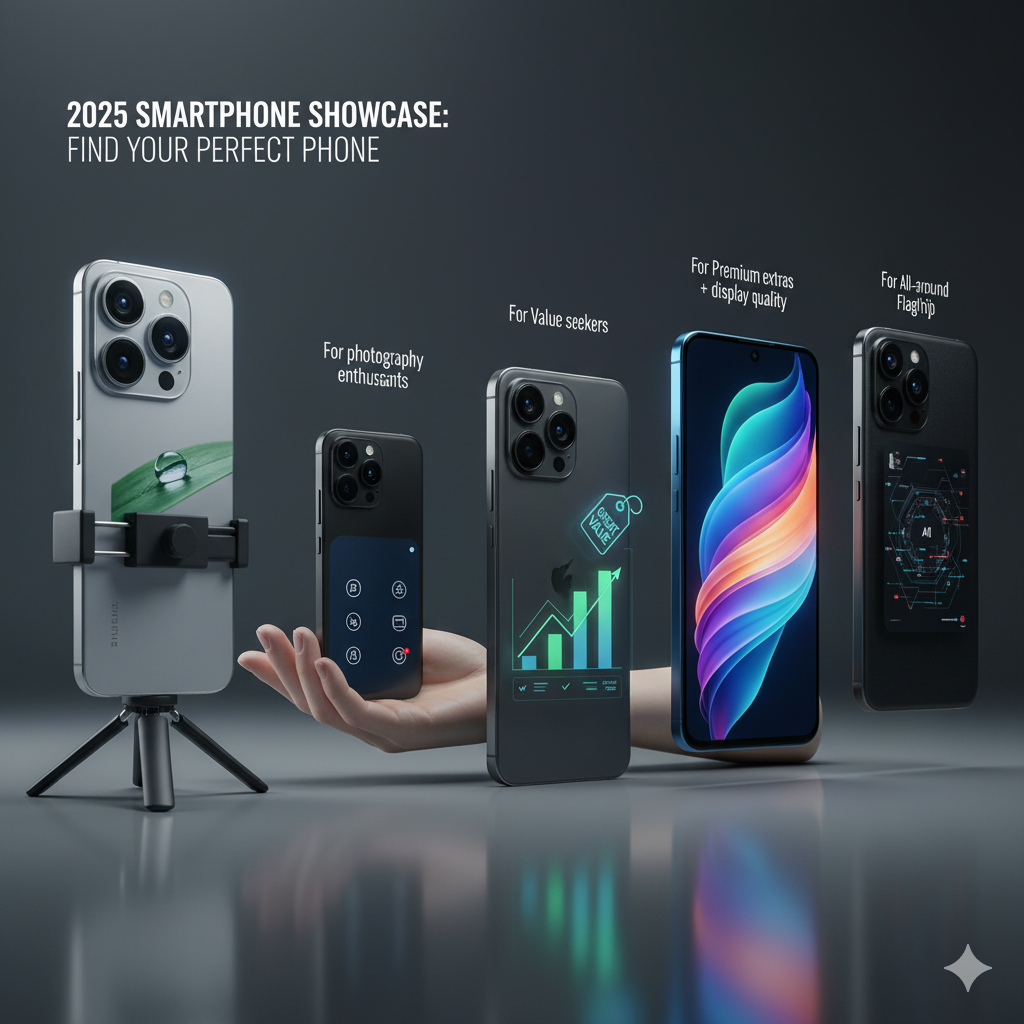
Recommendations: Which to Pick Depending on Use Case
For premium extras + display quality → Vivo X200 Pro Mini or higher-end Pixels or Samsungs.
For photography enthusiasts → Go with Pixel 9 or Galaxy S25. Best camera results, good lenses, intelligent software.
For minimalists who want truly small size → Zenfone 10 or Apple’s mini/SE series when available.
For value seekers → Pixel 8a delivers a lot for the money.
Final Thoughts
2025 continues to deliver fewer “mini” phones than many hoped, but the ones available are better than ever. The best compact phones now manage to provide flagship-level features without forcing you to carry something oversized.
If one-handed use matters to you, focus on width and grip feel over just diagonal inches. A phone can feel big even if the screen is 6.3-inch, depending on how it’s built.
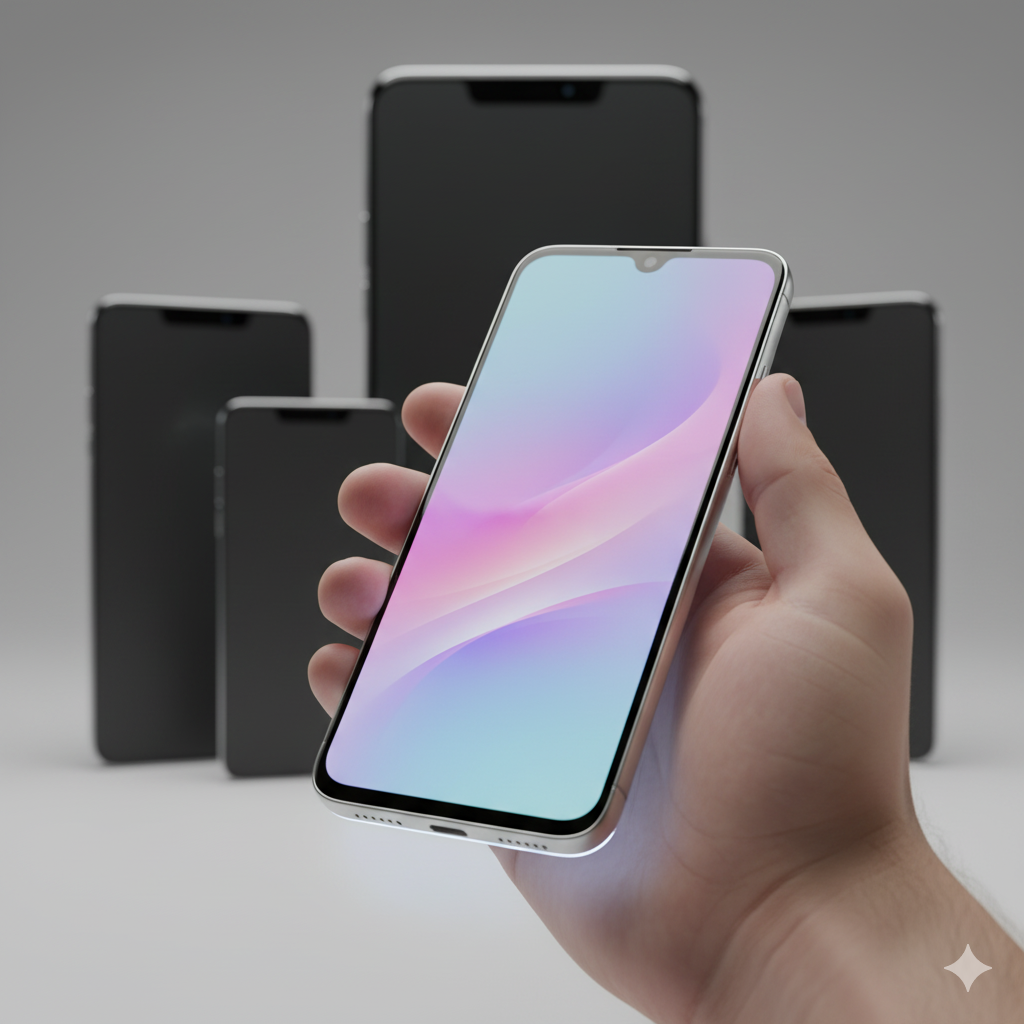
Key Takeaway
The sweet spot in 2025 for compact phones is around 6.0-6.3-inch diagonal, slim bezels, and a narrow profile. Phones like the Zenfone 10, Samsung Galaxy S25, and Pixel 9 hit this mark—offering high performance and excellent cameras without the size burden. Choose based on what you’re willing to trade off (battery, zoom, extras) for that comfortable fit.

